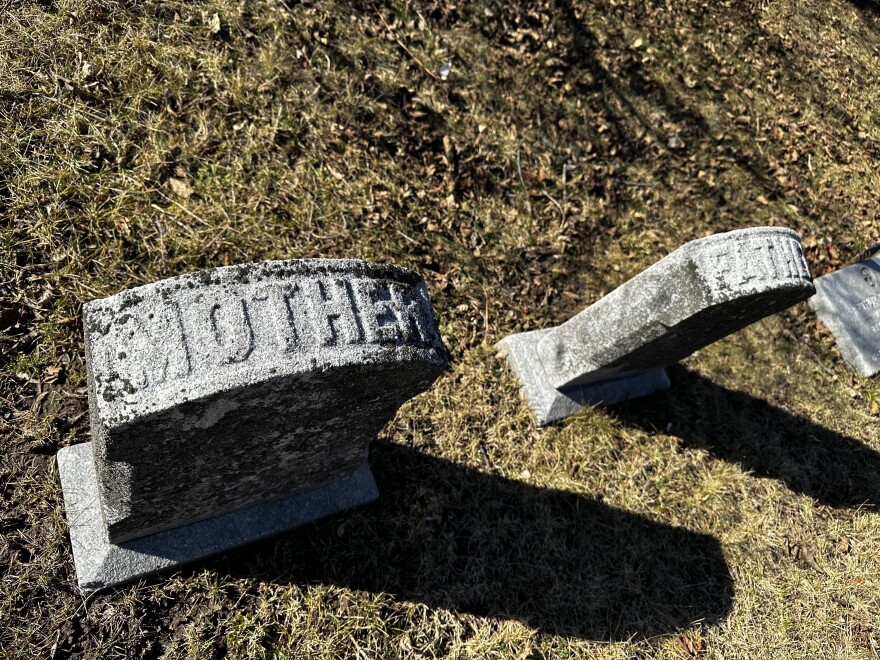Bubbler Talk question asker Jane Savage often walks with her son and dog through the adjoining Saint Adalbert and Holy Trinity cemeteries near Wilson Park in Milwaukee. The unique gravestones and elaborate monuments there have piqued her curiosity.
"There's been a couple of things that have stuck out to me, and I just wondered what the history was," Savage says.

Savage walks to a large, eye-catching monument.
"I think it's copper because of its patina. There's an old woman looking at a crucifix, and her hands are folded in prayer. I don't think she was a nun, but who was she? What's her story?," she wonders.
Mary Thiel, the director of cemeteries at the Archdiocese of Milwaukee, says the monument depicts St. Helen.
"She was the mother of Constantine," she says. "St. Helen converted to Christianity. She built many churches throughout Rome and in the holy land. In art, she's often depicted as an empress, holding a cross."
Savage points to buildings on the cemetery grounds, including one with boarded windows.
"I'm also interested in these buildings," she says. "Obviously, they were used at some point, but I'm not quite sure what for."
According to Thiel, the boarded-up building is the Conrad Chapel, which was used in the 1800s for committal services.
"But then new chapels were built just east of the railroad tracks. We have three chapels at Saint Adalbert: Our Lady of Czestochowa, the Hope Chapel and Holy Family Chapel. Currently, the Conrad Chapel is not in use," she says.
Thiel says the chapel’s roof will be repaired this spring, and the cemetery might consider restoring the chapel in the future.
Savage reflects on the cemetery’s presence in the south side Milwaukee neighborhood. "There's a lot of beautiful flowers in the summertime. As one of my neighbors says they're not going to put in a Walmart across the street from where we live because it's a cemetery," she adds.
Savage isn’t the only Bubbler Talk listener who has cemetery questions. At the Town of Milwaukee Union Cemetery near Bayshore, century-old headstones and memorials are nestled between a shopping center, Interstate 43 and ongoing construction.
Question asker Peggy Creer explains how her dog’s interest in the cemetery led her to it.

"Apparently, it's a bit of a wild space in the middle of an urban area," she says. "A lot of intriguing smells here — maybe more intriguing smells once Culver's went in across the fence. My dog likes to wander here. Then I started reading the gravestones."
Creer wants to learn more about the people buried there.
"Seeing how old some of this is — the earliest birth dates are in the 1700s," she says. "You see whole families, their little kids (buried) one right after another. Does anyone know who's all buried here, even if you can't read the headstones anymore?"
Ami Falk is the family service manager at Milton Lawns Memorial Park & Crematory. She says Union Cemetery was incorporated in 1848 during a cholera epidemic. About 2,000 people are buried there. Falk says most of the burial records were lost in 1919.

"There was a fire that destroyed nearly all of our physical records that we had at our original office location," says Falk. "That was just a few blocks from the cemetery. It was the former Four Mile Inn."
Between 1971 and 1974, a Glendale resident endeavored to name the graves.
"Mimi Bird actually recovered quite a bit of data to rebuild what she could record-wise," explains Falk. "Any records that are left to be recovered would be for those that are interred without a memorial marking their grave."
Creer and Savage say knowing the history about their local cemeteries gives a new kind of meaning to their dog walks around the gravestones.
_










